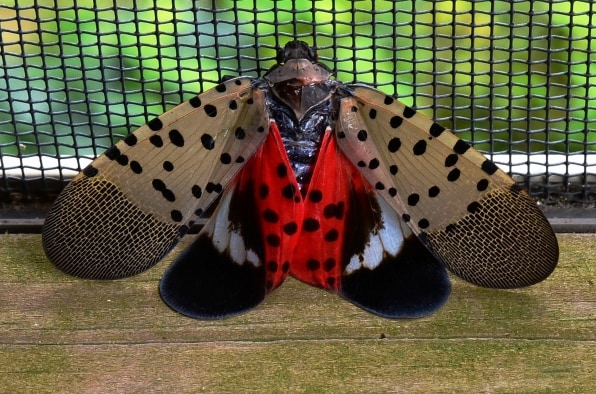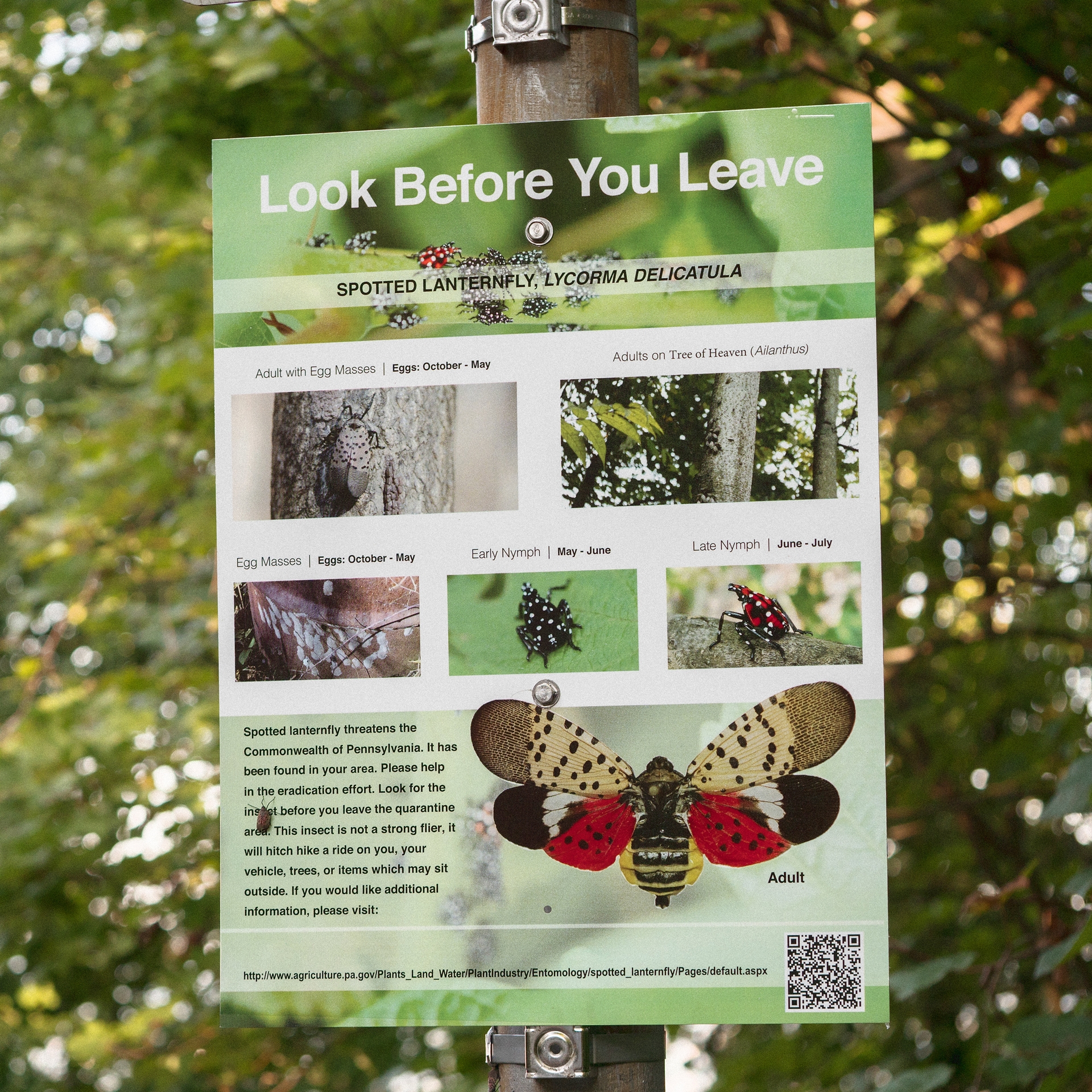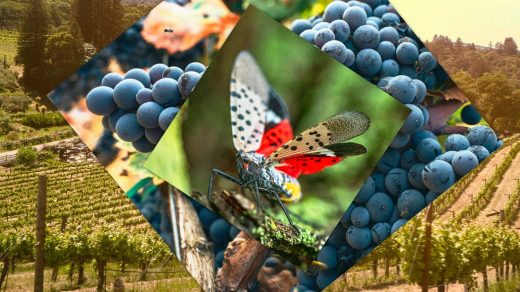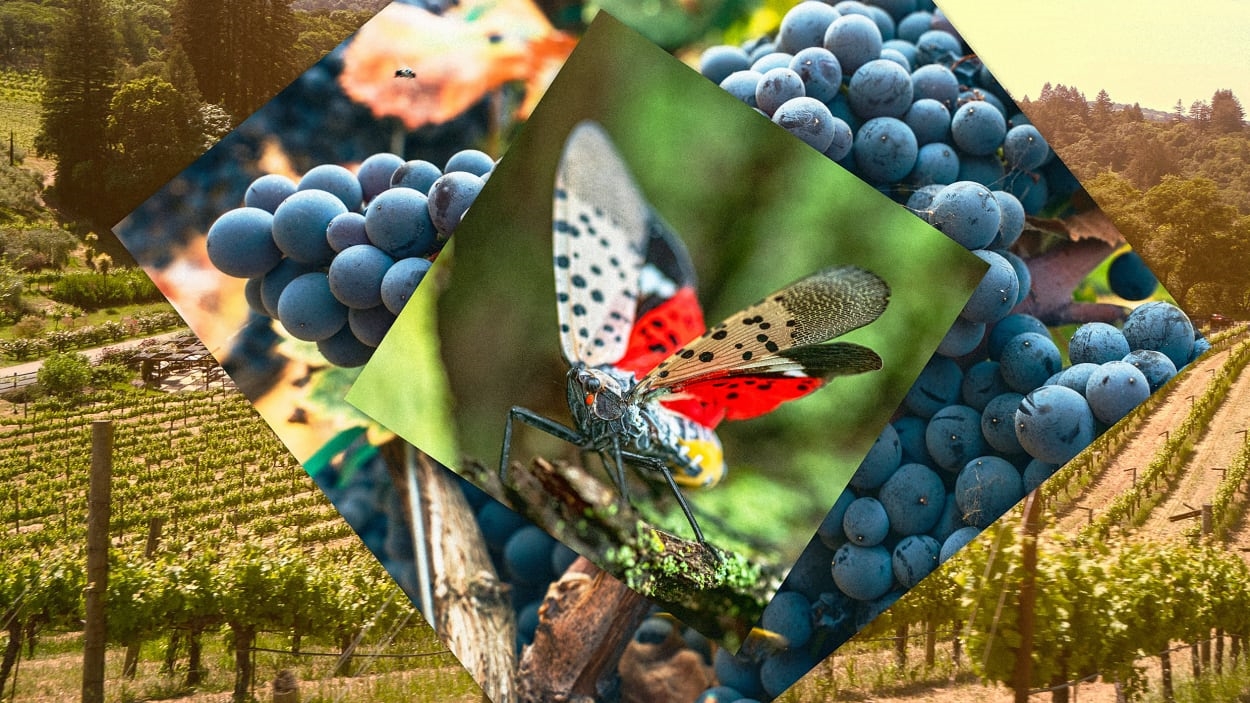Spotted lanternflies are about to hatch—and they’re going to be thirsty
By Lana Tleimat
If you live in the Northeast, you’re probably already familiar with the spotted lanternfly, the black and red spotted pests that have carpeted East Coast trees and sidewalks the last few summers. But lanternflies are more than just a nuisance for vineyards, which can be ruined by an infestation. Now experts are concerned that the bugs will soon reach California’s $170 billion wine industry.
Originally native to Vietnam and southern China, spotted lanternflies were first glimpsed in the U.S. in 2014. Nymphs hatch in the spring and bop around for a while before developing by July into thick-bodied, flying creatures with red wings. The insects thrive on sap they suck from tree trunks using a needle-like proboscis.

While their preferred snack is the invasive tree of heaven, also from China, the bugs can infest and damage native plants, as well. They have a particular taste for grape vines, and their effect on vineyards in the Northeast and Mid-Atlantic has already been significant. One Pennsylvania vineyard owner told CNBC in October that he lost “$525,000 worth of product” to the pest in a single year. If that level of destruction reaches California, with its 895,000 acres of vineyards, it could have disastrous effects on the industry as a whole.
“A great hitchhiker”
According to a report published in Nature, statistical models predict that the spotted lanternfly will reach California’s grape-producing regions by 2033, if not sooner.
“There are plenty of possibilities for it to [do so], because it’s such a great hitchhiker,” said Chris Jones, lead author of the paper. The bugs can lay their eggs on non-organic surfaces, like the bodies of cars or camping equipment, allowing them to “hitchhike” long distances and reestablish in new places. There have already been some close calls in California: last summer, a border inspection station in Truckee, CA, just north of Lake Tahoe, stopped a vehicle from New Jersey that was carrying firewood laden with spotted lanternfly eggs from entering the state.

Thankfully, statistical modeling research like Jones’s could help scientists know where to monitor for the insect, and be prepared for it when it arrives. That information can help experts like Cindy Kron, an entomologist working to increase awareness of the pest with the University of California Cooperative Extension.
“We’re preparing people in the grape industry through education,” Kron said, so that growers can know “what it looks like, and who you need to report it to.”
Kron is wary of promoting treatment strategies for spotted lanternfly before they’re officially spotted in California, to prevent worried growers and landowners from over-applying pesticides at the detriment of native ecosystems.
For infested vineyards in the Northeast, Penn State Extension recommends killing any nearby tree of heaven (the spotted lanternfly’s preferred host tree, also known as ailanthus altissima), using herbicide, using insecticide treatments for the bugs themselves, and installing netting around the vines, which can also be treated with insecticide.
But these chemicals can require multiple applications, which can be expensive for growers. And for California’s many organic vineyards, which swear off the usage of most chemical treatments, the solutions are less obvious.
To spray or not to spray
For growers unable to use chemical insecticides, such as those maintaining an organic certification, there are fewer options currently available to prevent and treat spotted lanternfly infestations. But researchers such as Dr. Francesc Gómez Marco, an entomologist at University of California, Riverside, are working to find innovative solutions before the insects make it to the West Coast.
Biological control is the intentional use of natural predators and pathogens against unwanted pests. Research is being done in the East Coast on the use of specialized fungus applications. In California, Gómez Marco is researching parasitoids (a parasite whose larvae feed off of a host), that also hail from the spotted lanternfly’s native China, as a method for controlling the pest. His lab tests different parasitoids’ efficacy against spotted lanternfly as well as the threat they pose to native plants.
“Insecticides normally just slow down the establishment of the pest, but the pest always finds a way, and they’re going to be here forever.” said Gómez Marco.
One of the natural parasitoids he studies could potentially keep spotted lanternfly populations in check indefinitely. These kinds of solutions will be necessary to maintain organic vineyards, he says, but will also reduce the cost burden for non-organic growers, who would have to spend less on insecticides and other treatments.
While the lab has yet to find a species that can be safely deployed, Gómez Marco is optimistic that he and other researchers will find solutions in time to protect California’s bountiful vineyards.
“The industry is very concerned . . . ,” he says. Growers want to make sure they are ready, “in case something appears.”
(6)



